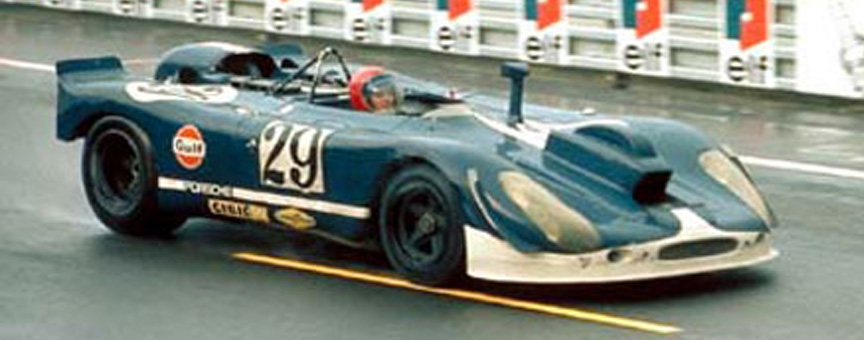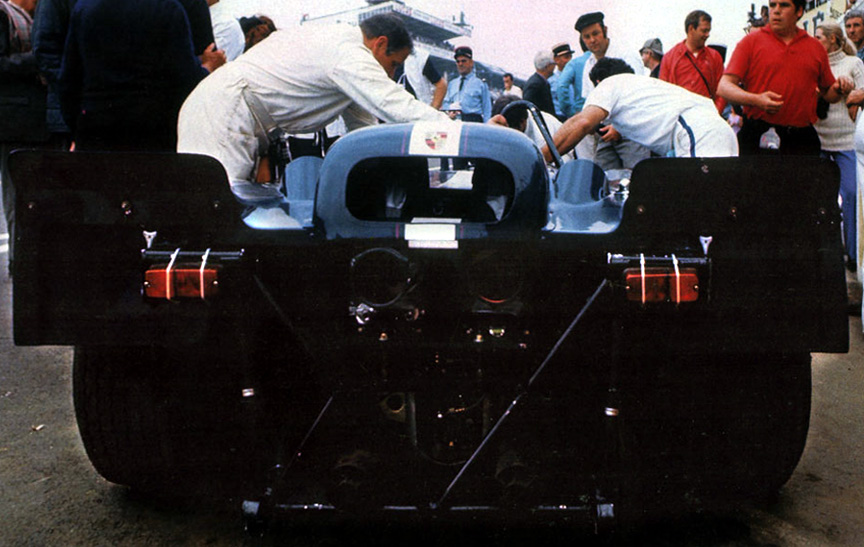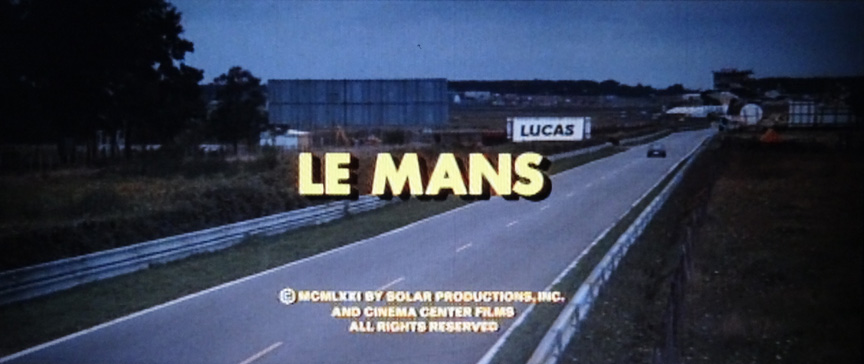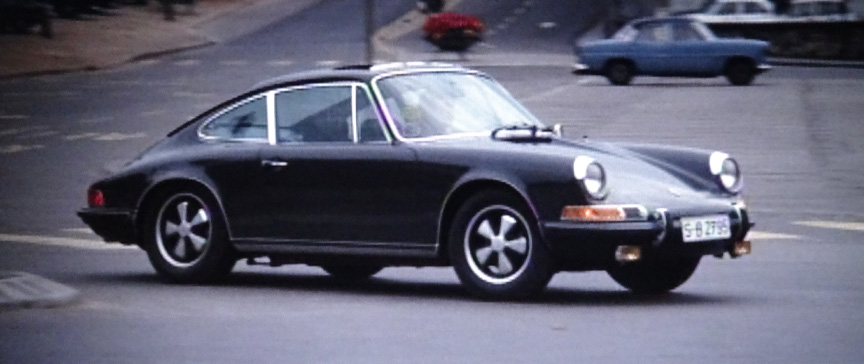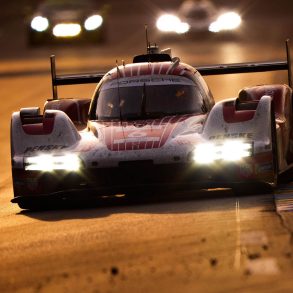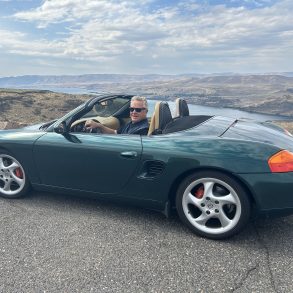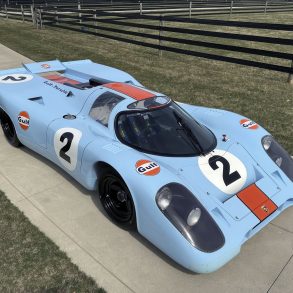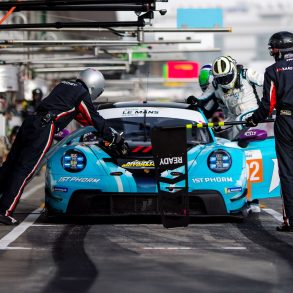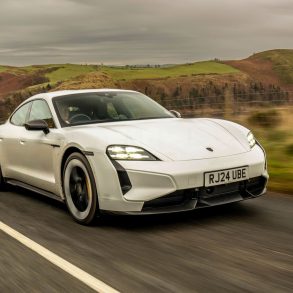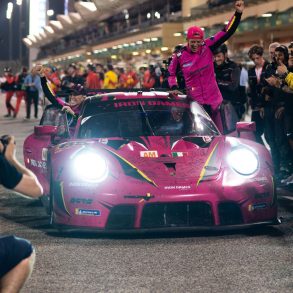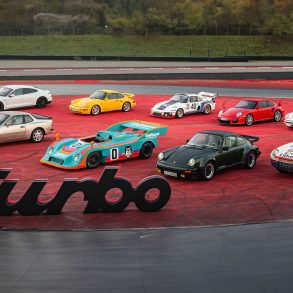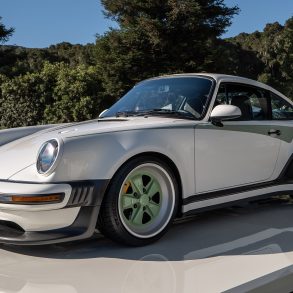Movie star and racing driver Steve McQueen had an idea to make a film based on the Le Mans 24H racing. He had a personal Porsche 908 K Flunder Spyder (chassis 908-022) in which he had scored second in 1970 Sebring 12H. For the Le Mans the car was converted into a camera carrier and was equipped with three cameras, one in front and two at the back above the gearbox.
The car was driven by Herbert Linge and Jonathan Williams. They had to make extra pit stops for changing the film rolls (or actually the full cameras as it was quicker), but still managed to cover 282 laps which was not bad for a 3-litre car with additional weight and ruined aerodynamics. The winning 4.5-litre 917 did 343 laps. 1970 was the first year that Porsche managed to take overall victory at Le Mans (and full podium in addition), so the numerous cameras were at the very right race. Although half the scenes are filmed during the actual race, it is a fiction movie.
This means, the driver names and racing results in the film do not reflect the results of the race and the actual winning 917 is basically left out from the film.
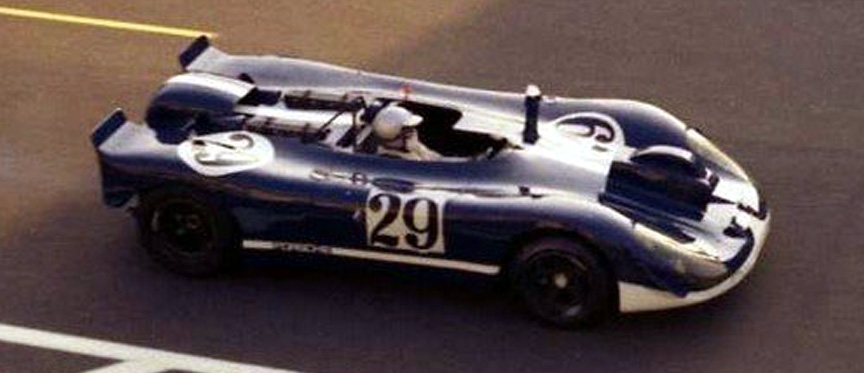
Unfortunately it rained a lot, so the footage shot during the rainfall aswell as during the night couldn’t be used. After the race many drivers were used to film the fiction racing scenes in Porsche 917 and Ferrari 512. The combined length of the film rolls was an astonishing 10.000 metres. The finished 104-minute film is for true petrolheads – during the first half an hour no words are spoken.
Steve McQueen’s personal 911 S 2.2, which he ordered directly from the factory in Stuttgart. According to the invoice the car was sold by Dr.Ing.h.c.F.Porsche KG on June 1, 1970, just shortly before the Le Mans 24H. The invoice was written to Mr. Steve McQueen, Solar Productions Inc., 4024 Radford Avenue, North Hollywood, California 91604. The chassis number of the car is 9110301502, engine number 6302094, transmission number 7700315, special order exterior color 6801 Siefergrau (Slate Gray), black full leather interior (special order), tyres Pirelli 165-15, country code C02 (USA), options 426 High.gloss wheel arch trim, 427 Rear under valance, 453 Blaupunkt Frankfurt radio with US-band, 470 Comfort equipment, 559 Air conditioning, 568 Tinted glass all-around, 650 sun-moon-roof. Most notable on the invoice is the price of the AC system, which costs as much as the special order exterior and interior together (AC added more than 6% to the 911 S base price). McQueen gets the car for dealer price with 15% discount.
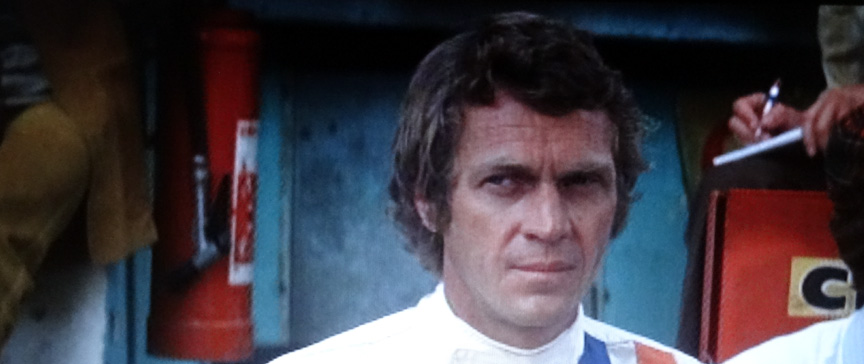
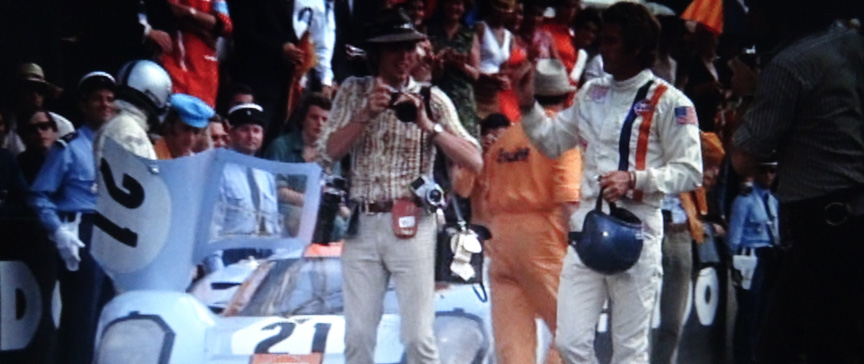
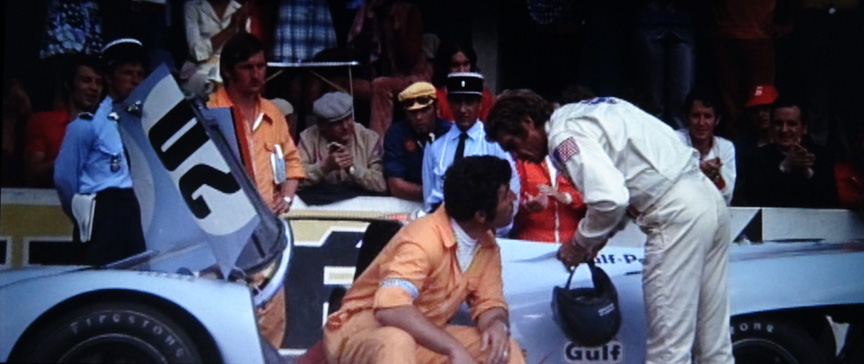
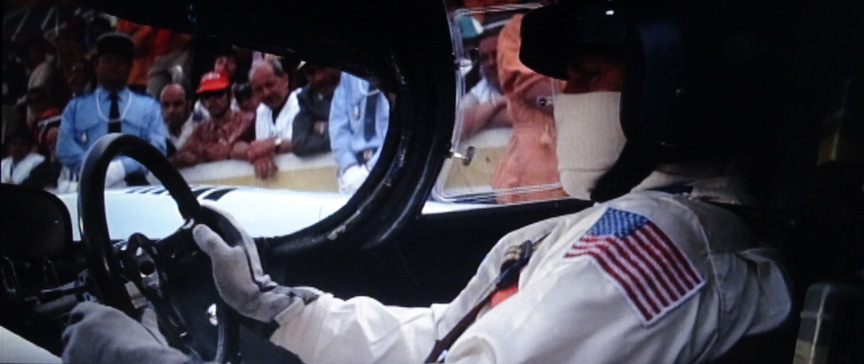
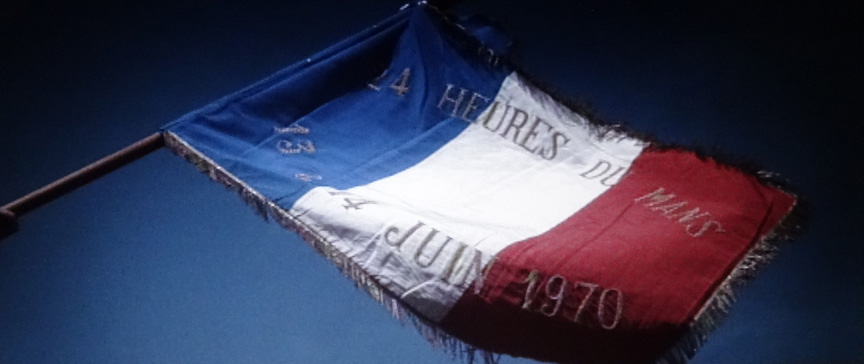
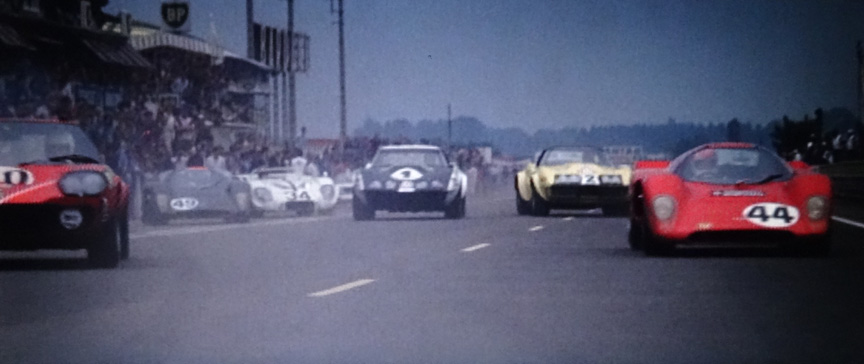
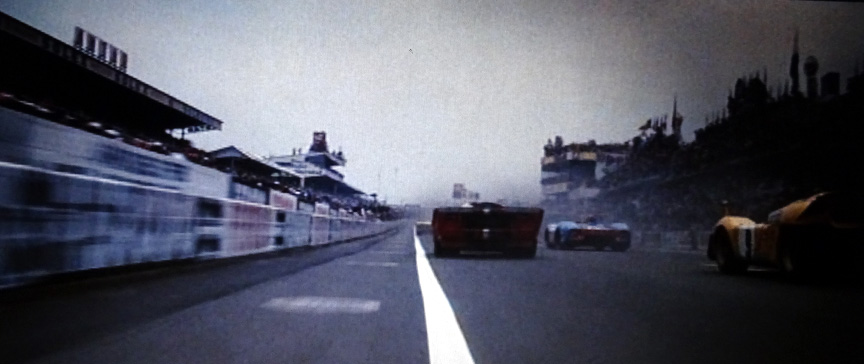
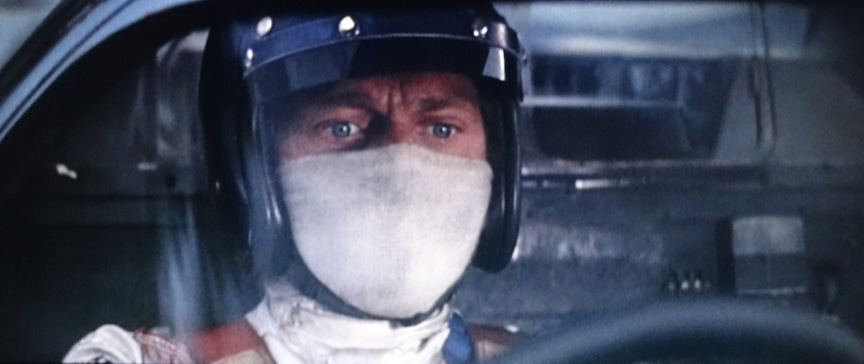
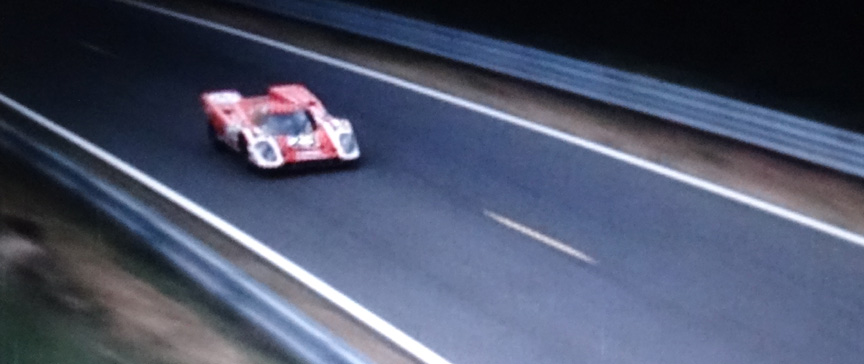
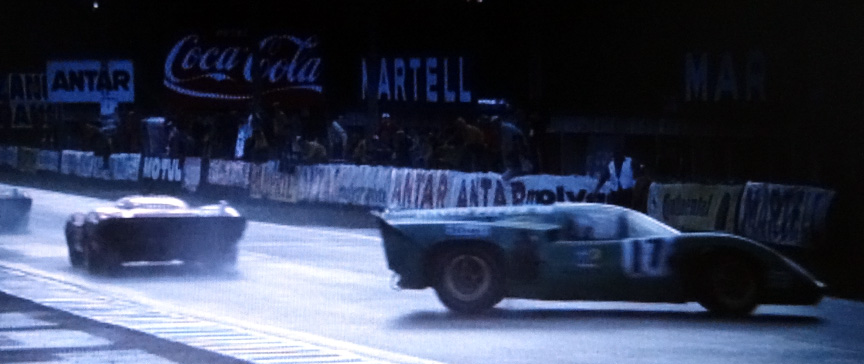
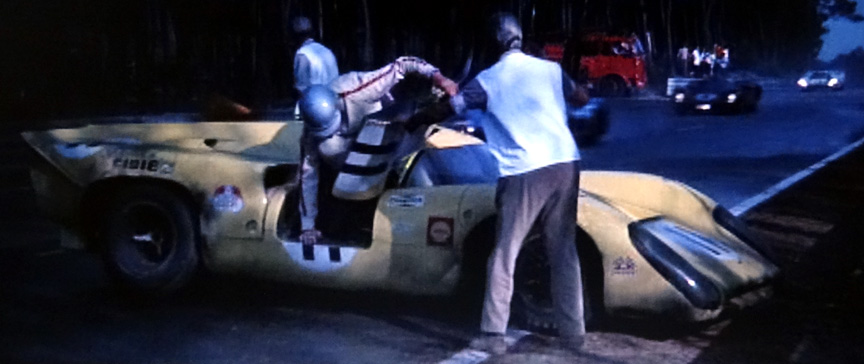
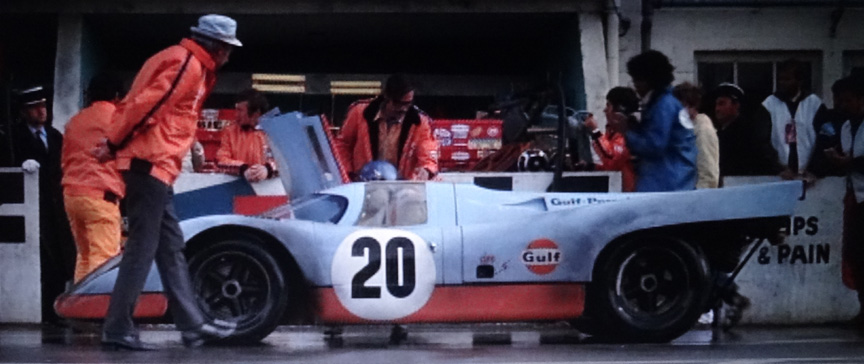
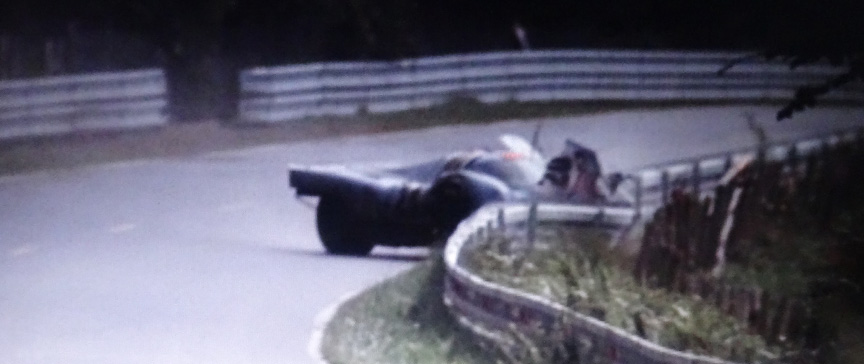
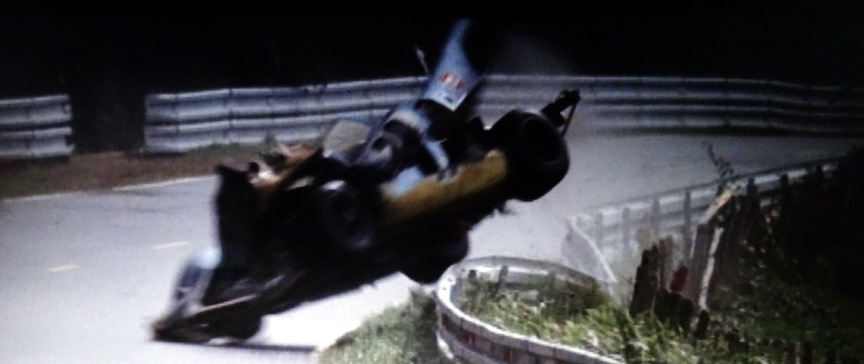
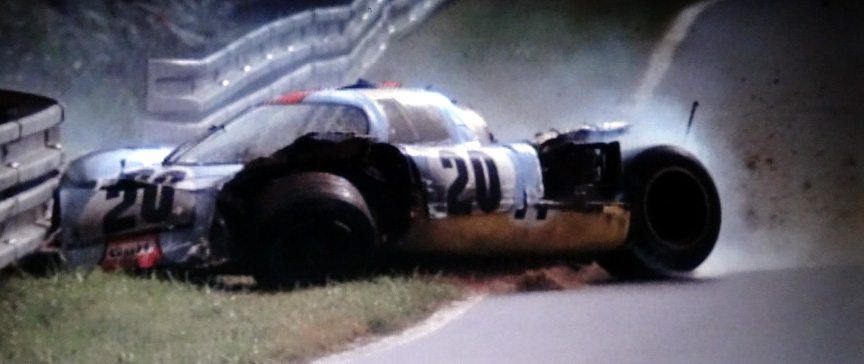
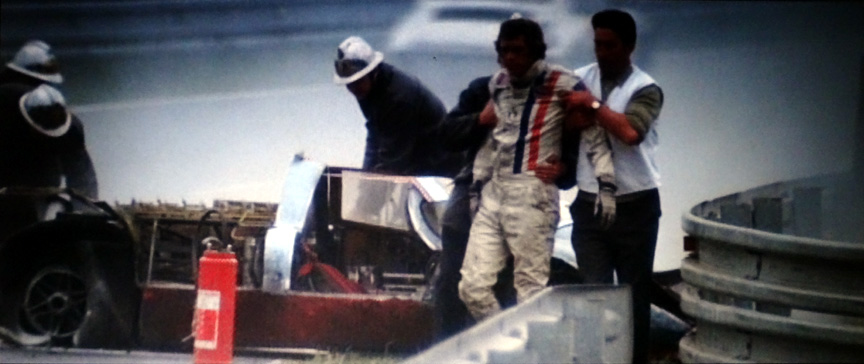
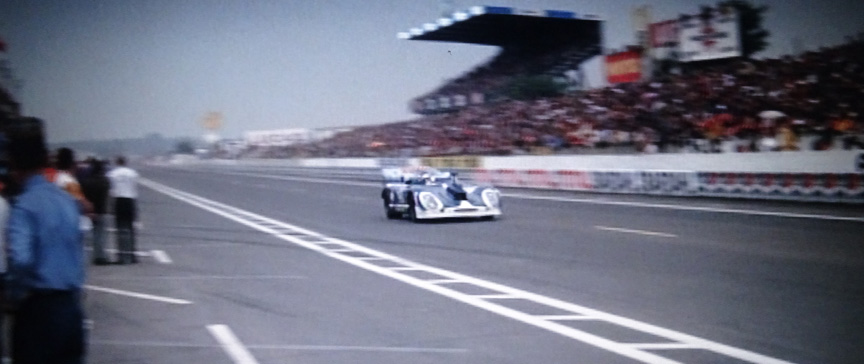
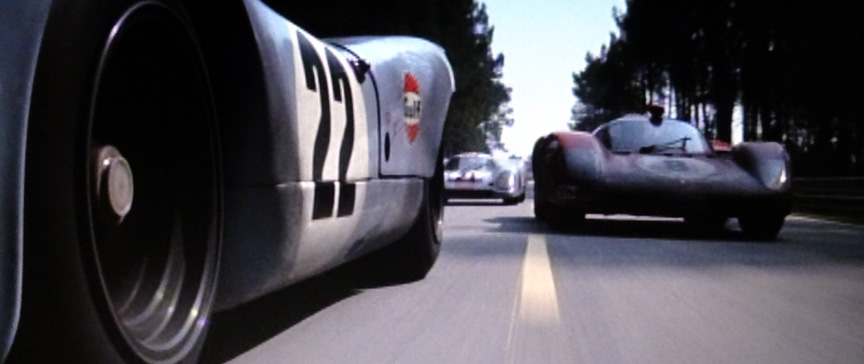
1970 Le Mans 24H results
Results in reality Results in the film
1. #23 Porsche 917K Hermann/Attwood 343 laps 1. #22 Porsche 917K Dion/Wilson (real result of #22: 49 laps)
2. #3 Porsche 917LH Larrousse/Kauhsen 338 laps 2. #21 Porsche 917K Ritter/Wiese/Delaney played by McQueen (real result of #21: 22 laps)
3. #27 Porsche 908/02LH Lins/Marko 335 laps 3. #8 Ferrari 512S Stahl (real result of #8: 38 laps)
1970 Le Mans 24H results
| Results in reality | Results in the film |
| 1. #23 Porsche 917K Hermann/Attwood 343 laps | 1. #22 Porsche 917K Dion/Wilson (real result of #22: 49 laps) |
| 2. #3 Porsche 917LH Larrousse/Kauhsen 338 laps |
2. #21 Porsche 917K Ritter/Wiese/Delaney played by McQueen (real result of #21: 22 laps)
|
| 3. #27 Porsche 908/02LH Lins/Marko 335 laps | 3. #8 Ferrari 512S Stahl (real result of #8: 38 laps) |
Drivers who helped making the film were Aldo Pessina, Andre de Cortanze, Arthur Blank, Brian Redman, Christian Baron, Claude Ballot-Lena, David Piper, Derek Bell, Dieter Spoerry, Edgar Berney, Erich Glavitza, Gerard Larrousse, Guy Chasseuil, Ham Akersloot, Helmut Kelleners, Herbert Linge, Herbert Müller, Hugues de Fierlant, Jacky Ickx, Jean Pierre Bodin, Jean Pierre Hanrioud, Jean Pierre Jabouille, Jean Sage, Jo Siffert, John Miles, Jonathan Williams, Jürgen Barth, Masten Gregory, Michael Parkes, Mimmo Neccia, Nanni Galli, Paul Blancpain, Peter Huber, Pierre Greub, René Herzog, Richard Attwood, Rob Slotemaker, Robin Ormes, Rolf Stommelen, Silvio Moser, Steve McQueen, Teddy Pilette, Toine Hezemans, Vic Elford.
It took a year to make the film and it premiered in cinemas in June 1971.


